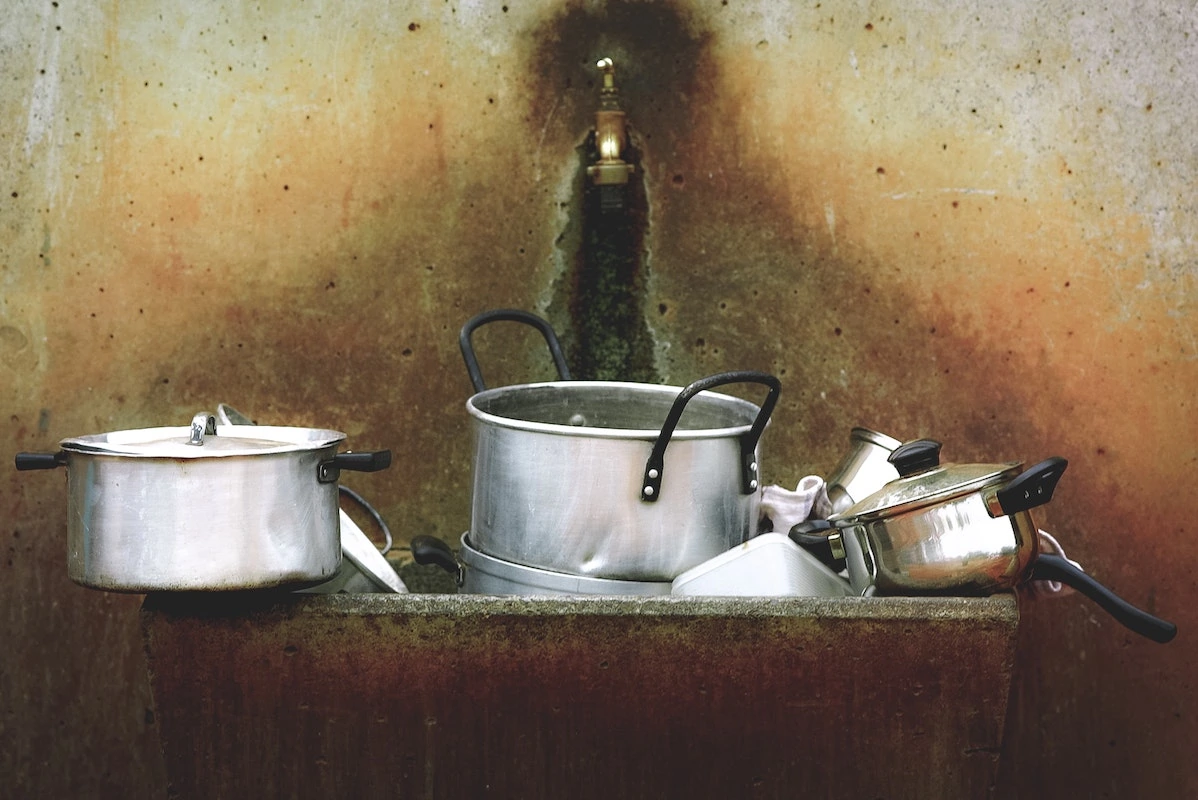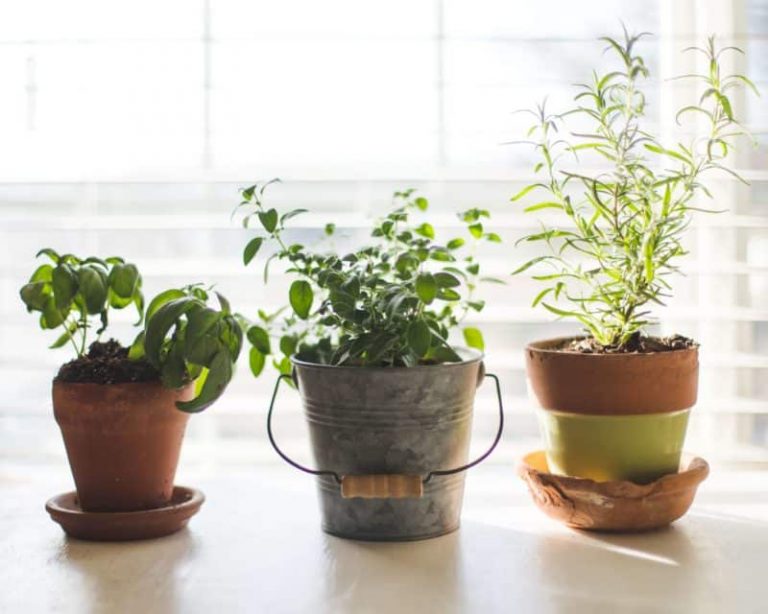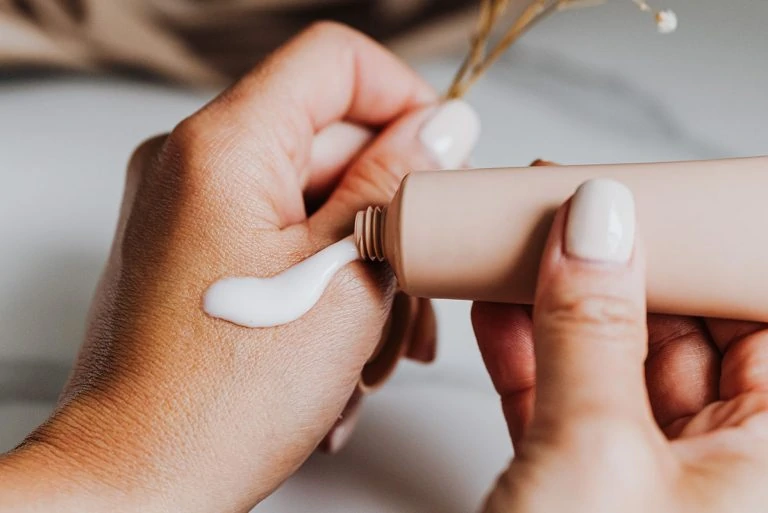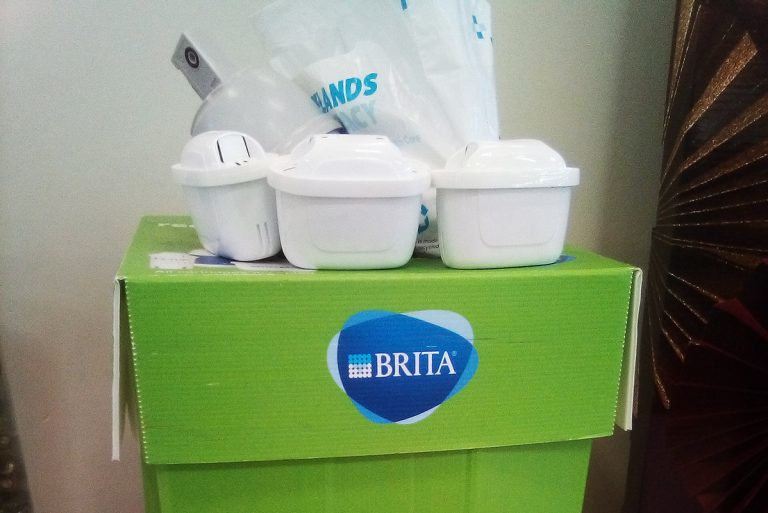Recycling your old cookware can be relatively easy, or it can be a bit trickier. For example, you can’t recycle pots and pans made from certain materials, or mix of materials, or with some kinds of coatings.
Here’s how to dispose of your cookware responsibly.
Can you recycle pots and pans?
There’s no cut-and-dried answer to this question, as cookware comes in various types, made from many different materials. Some of these materials are easily recyclable, while others are not.
Unfortunately, many modern pots and pans feature a combination of plastic and metal, and a chemical coating, all of which make them unfit for recycling. However, the rules for how to recycle pots and pans vary depending on where you live, so it’s worth checking with your local municipality.
You can also check with recycling centers in your area to see what types of cookware they’ll accept.

Some recycling facilities are reluctant to recycle pots and pans with special coatings to make them non-stick and heat-resistant, as these often contain toxic chemicals. To recycle these, the center has to first separate each type of material, which is time-consuming and expensive, and that’s if the facility even has the appropriate equipment to do this in the first place.
For this reason, many recycling centers do not take pots and pans, or won’t accept certain types, as the effort to recycle them is simply not worth their while. Other types of cookware, such as cast iron, aluminum, copper, and steel, are much more cost-effective to recycle and so it’s easier to find a facility that will take them off your hands.
If you’re unable to recycle pots and pans through your curbside program or a recycling center, you can also responsibly dispose of your old cookware by selling or donating it, renewing it, or reusing it.
Why should you recycle pots and pans?
It may seem like the easiest option for disposing of your damaged, broken, or unwanted cookware is to simply throw it in the trash. We all want to recycle pots and pans rather than sending them to landfill, as sending pots and pans to landfill may not only cause pollution, but it also means large amounts of resources need to be used to manufacture new items. Not to mention the environmental impact of mining and carbon emissions involved.
Non-stick pots and pans in particular use a considerable amount of energy during production. Refining and mining the materials used for these pans also have an environmental impact, as well as transporting the final product to its buyer.
Buying durable, high-quality cookware will go a long way to make sure you don’t have to throw it out very often. However, you will have to dispose of pots and pans eventually, when they’re damaged beyond repair.

When this happens, it’s important to recycle your cookware or otherwise dispose of it responsibly to avoid contributing to landfill and pollution, while making sure as many of the materials are reused as possible.
Furthermore, having an awareness of what type of cookware and kitchen utensils you can recycle will allow you to make more environmentally-friendly purchasing decisions.
Modern manufacturers use a range of chemicals to make non-stick cookware sets that are resistant to high temperatures. However, these chemicals can be hazardous to animals and the environment more generally, as well as making the pan difficult to recycle.
Which types of cookware can you recycle?
If you want to recycle pots and pans, you need to know which types are accepted. Cookware can be made of a range of materials, some being easier to recycle than others. Furthermore, many modern pots, pans, and kitchen utensils are coated in various chemicals that make them more difficult to recycle.
The following types of cookware are generally accepted by recycling centers, and sometimes by local municipalities as part of special recycling pick up or drop off programs. In all cases, be sure to check with your local sanitation department or a recycling center in your area to see what cookware they’ll take for recycling.
Aluminum

Around 95-98 percent of all aluminum can be recycled, making this one of the most easily recyclable types of cookware. In fact, thanks to this metal’s excellent recyclable and durable properties, 75% of all aluminum produced is still in use.
Most recycling centers will gladly recycle pots and pans, as well as utensils made of aluminum. Although most cookware is too big to be put through recycling machinery with other items, recycling centers usually have separate systems for metals.
Copper

Nothing beats copper when it comes to recyclable metals. It is 100% recyclable, and you can recycle copper over and over again. There’s no difference between recycled and freshly mined copper, making this very attractive for manufacturers and lucrative for recycling centers.
For this reason, copper is one of the metals that you may be able to earn a bit of cash by selling it to a recycling center or scrap metal dealer – learn how in our guide to recycling metal.
Stainless steel

According to the International Stainless Steel Forum, 85% of stainless steel products can be recycled into a new steel or iron product at the end of their life. Stainless steel is a popular choice for cookware and utensils, as it’s durable, resistant to scratches, and easy to clean.
The good news is that you can recycle these items through most recycling facilities. You can also get in touch with your local municipality to see if they have a special collection program for stainless steel and other metals – some areas run these on particular dates.
Cast iron

Cast iron is another easy-to-recycle metal commonly used to make cookware. This material is beloved by chefs for its durability, weight, and ability to retain heat, though it is more difficult to clean than other types of cookware.
Cast iron is a type of ferrous metal – a group of metals that contain iron. Both categories of metal are recyclable, but it’s easier to recycle recycle pots and pans made of non-ferrous metals as they don’t lose their strength, durability, and quality even after years of use.
On the other hand, ferrous metals must go through melting and purifying stages, after which they are converted into solid blocks, making them more difficult and costly to recycle.
Pots and pans with chemical coatings

Recycling centers generally accept pots and pans, but they may reject these items for a few reasons, most commonly because they have chemical coating. Cookware can have a range of coatings to make it non-stick and heat-resistant, most notably Teflon.
Teflon is a toxic material that can cause significant harm to human health, as well as the environment, which is why it shouldn’t be sent to landfill. For the same reason, not all recycling facilities are set up to handle these kinds of coatings.
However, there are many recycling centers that will take pans coated with Teflon and other chemicals. They strip the chemical coating , but this is quite a tedious process and might incur an additional fee.
Be sure to ask the facility if they’ll take chemically-coated cookware and, if so, if they charge an extra fee.
Can you recycle pots and pans that aren’t made of metal?
Unfortunately, generally can’t recycle pots and pans that aren’t made of metal. Your best bet is to either donate them to a charity or re-use them.
For example, ceramic pots are treated with a chemical that makes them more durable and resistant to high temperatures. While these properties make them ideal for cooking, it also makes them very difficult to recycle, and most programs won’t accept them.
In the same way, any non-metal components of pots and pans such as handles need to be separated before recycling. If possible, remove plastic and other parts before taking them to a recycling center – otherwise the facility should be able to do this, but they may charge a fee.
Depending on the material, you may be able to recycle these separately. For example plastic handles from metal pans can usually be recycled into new plastic products.
Can you recycle cooking utensils?
Yes, many types of cooking utensils can be recycled or reused. Kitchen knives can often be recycled, particularly if they’re made of aluminum, stainless steel, titanium, or carbon steel.
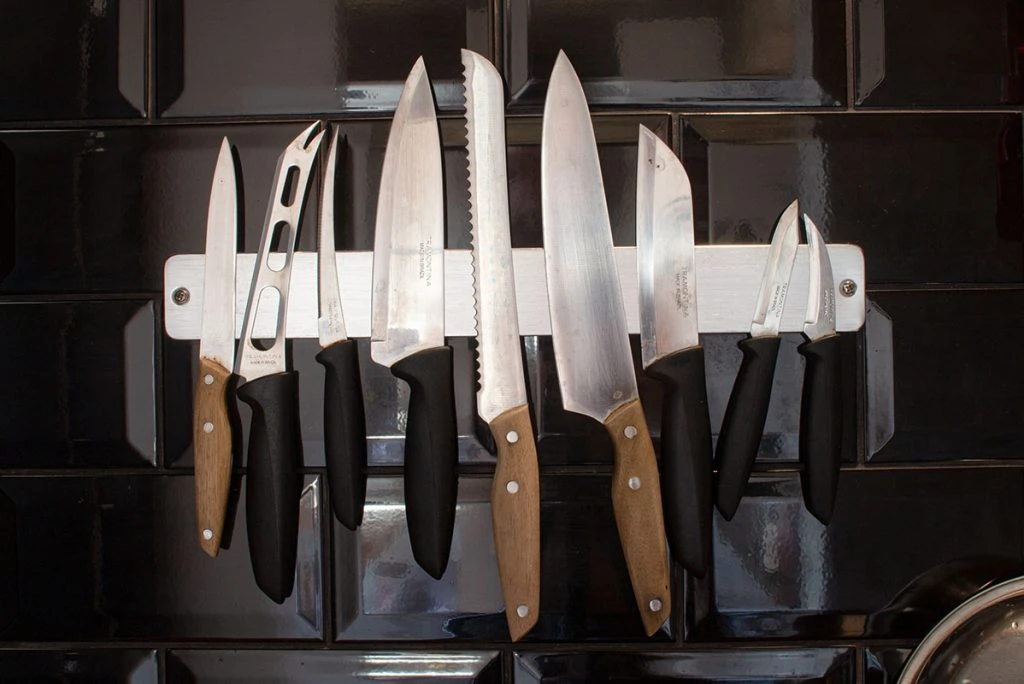
See our full guide to responsibly disposing of kitchen knives.
Likewise, most recycling centers will accept metal spatulas, cutlery, and other implements. Kitchen utensils made of silicone may also be recycled, though this is a bit trickier and you’ll need to find a specialized recycling center.
Can used cookware be reused?
If your local waste management authority or the recycling center won’t accept your old pots and pans, you may be able to reuse them. There are some circumstances where you cannot reuse old cookware, such as if it is damaged beyond repair, or if the Teflon coating is damaged or flaking off.
Otherwise, there are a number of ways to reuse or dispose of your used cookware without damaging the environment.
Give your old cookware new life
Most people don’t bother to try and recycle pots and pans that are in bad condition, due to the difficulty associated with this. Often, people instead discard their old cookware simply because it’s heavily stained or burnt. Before disposing of your soiled pots and pans, try to deep clean them and give them new life instead.
You can give cast iron cookware a good scrub with baking soda and dishwashing liquid. Once you have washed the pan, let it dry, put it in the oven at 350°F, and it will be like new.
You can also clean stainless steel pots and pans with baking soda – this will shift stubborn stains that chemical detergents can’t move.
Boil 1/4 cup of water in your stainless steel pot or pan, add a few tablespoons of baking soda and let it simmer for five to ten minutes. Finally, use a scouring pad to scrub away the stains.
Donate or sell your old pots and pans
Before you throw away your old cookware, see if someone could make use of it. If your used pots and pans are in good condition, you could donate them to a charity shop like Goodwill, or a local soup kitchen or homeless shelter.
You may even be able to sell it online through Craigslist or Facebook Marketplace, or give it away on Freecycle.
Repurpose your old cookware
For any cookware that isn’t in good enough condition to donate and is unfit for recycling, the best way to responsibly dispose of it is by repurposing or upcycling it.

Here are some fun ways to repurpose old cookware:
- Use old pots and pans to store your favorite candies, cookies, or snacks
- Turn them into planters for your garden
- Give lightweight pieces to your kids for their toy kitchen
- Use it for your art and craft projects, such as melting candle wax or mixing handmade soaps
- Turn old muffin pans into organizers for your stationery or art supplies
How to recycle pots and pans all boils down to what they’re made of
A great way to look after the environment is to recycle pots and pans, or donate, reuse, or repurpose your old cookware and utensils. Furthermore, investing in sustainable and long-lasting pans will go a long way to minimizing your environmental impact.
It’s best to buy high-quality cookware that is designed to last and made of easily recyclable materials such as aluminum, copper, or stainless steel. Avoid cookware with Teflon and other chemical coatings, as not only is this difficult to recycle, but can be hazardous to people and the environment.
To learn about recycling metal more generally, check out our guide to how to recycle metal.

